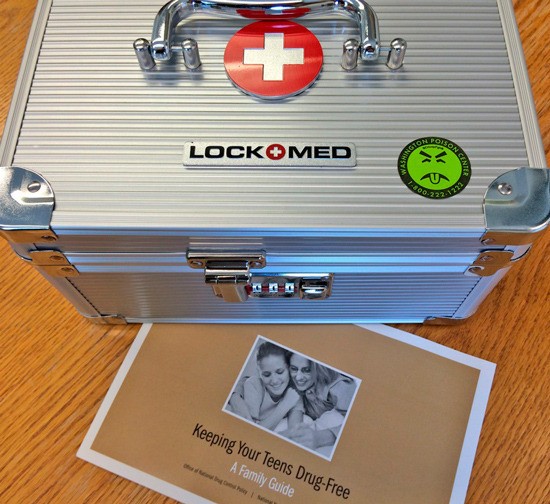The United States is in the midst of an epidemic, the Center for Disease Control has said, although if you look around you, no one is getting sick.
And yet, nearly 23,000 people in the United States died in 2013 from this particular outbreak.
The cause is prescription medication overdose, and the Bonney Lake Police Department, the Sumner Police Department and East Pierce Fire and Rescue are working to mitigate prescription overdoes in their communities.
Last week, Bonney Lake police and East Pierce received 44 metal combination-lock boxes each for the purpose of storing prescription medication, e-cigarette and marijuana products safely and away from children, said East Pierce Public Education Specialist Dina Sutherland.
“One of the highest risk audiences for unintentional poisoning is kids,” Sutherland said. “This creates another layer and prevention to keep drugs and marijuana paraphernalia out of small hands.”
The boxes are free of cost, and residents only have to fill out a small questionnaire at the station to receive their box.
The Sumner Police Department received their lock boxes last month, and had six left as of last week.
Carmen Palmer , Sumner communications director said the department will be getting more lock boxes sometime in the future.
The money for the boxes came out of the Drug Free Communities Support Program grant, which was recently awarded to the Sumner School district.
Additional drug facts:
• According to the state Department of Health, poisoning is now the leading cause of unintentional injury death in the state, surpassing motor vehicle crashes and falls.
• Between 2009 and 2013, there were nearly 4,000 deaths caused by unintentional prescription drug overdose in Washington.
• The Washington Poison Center received 32 cases of e-cigarette exposure so far this year. 21 of those cases were in children, and all but one child were exposed in their homes.
• According to a New York Times article, less than a teaspoon of liquid nicotine, swallowed or absorbed through the skin, is enough to kill a small child.
• The Washington Poison Center, received 133 cases of marijuana this year. 37 percent of these cases had minor effects on the users, 23 percent had moderate effects, and 3 percent had major effects.


